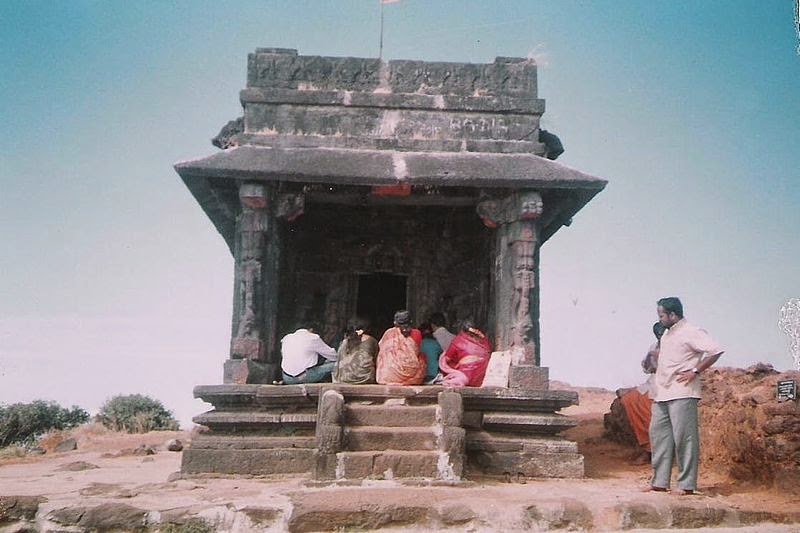Location :
Fanjingshan is located in Tongren, Guizhou Province in southeastern China. It is the highest peak of the Wuling Mountains. The elevation of its terrain ranges from 480 to 2,570 meters (1,570–8,430 ft) above sea level.
How to Reach :
Fanjingshan, you’ll have to take a bus from Tongren (a city in Guizhou province of China). The bus takes around two hours to reach the base camp from where travellers need to go on a challenging 8,888-step ascent, which will take around five hours to reach the summit. Those who don’t want to take the stairs, there’s a cable car to transport visitors to the top.
Description :
Fanjingshan is considered a sacred mountain of Chinese Buddhism, ranking just below the Four Sacred Mountains of Buddhism. It is considered the bodhimaṇḍa (or daochang)—a spot in which one reached enlightenment—of the Maitreya Buddha. The influence of Buddhism reached Fanjingshan by the Tang dynasty at the latest, especially after Hou Hongren (侯弘仁) constructed the Zangke Road (牂牁道) in 639 AD, which facilitated transport in the mountainous region, and local gazettes record the construction of several temples in the area. More temples were built during the ensuing Song and Yuan dynasties.
Buddhism greatly prospered during the Ming and Qing dynasties, when the cult of Tianguan Maitreya (天冠弥勒) became dominant in Fanjingshan. The Bozhou rebellion in the late 16th century caused great damages to Fanjingshan's temples. After suppressing the rebellion, the Wanli Emperor ordered the monk Miaoxuan (妙玄) to rebuild the Golden Peak and the Cheng'en Temple (承恩寺). Many other temples were constructed in the area, ushering in the golden era for Buddhism in Fanjingshan. Most temples during the Ming and Qing dynasties belonged to the Pure Land and the Linji sects of Buddhism.
In the turmoil that toppled the Qing dynasty, many temples were destroyed by marauding armies and bandits, and few monks remained in the Republic of China era.[2] After further destructions during the Cultural Revolution, Buddhism has enjoyed a renaissance since the 1980s. Many old temples have been rebuilt and new ones constructed, including the Cheng'en Temple, Huguo Chan Temple (护国禅寺), Great Golden Buddha Temple (大金佛寺), and Longquan Temple (龙泉寺).
In 2010, the Fanjingshan Buddhist Cultural Park was opened, with a Golden Hall that houses a 5-metre-tall (16 ft) statue of the Maitreya Buddha made with 250 kg (550 lb) of gold and thousands of gems. It is said to be the largest gold Maitreya statue in the world.
Attractions :
Old Golden Summit
The Old Golden Summit is 2,493 meters above sea level. When observed from a distance, it looks like the kind of rice steamer used by farmers.
Around the Old Golden Summit there are lots of strange and magnificent views, such as the Book Scrolls, the Mushroom Stone, the Eagle Rock and others. Besides the fantastic views from the summit, many temples are located there.
Mushroom Stone
This special mushroom-shaped rock sits on the summit, and is now an icon of Fanjing Mountain. It is 9.4 meters tall, and about 1 billion years old. Many artists have created work based on the Mushroom Stone.
New Golden Summit
The New Golden Summit is 2,336 meters in altitude. If you are lucky enough, you will see the peak surrounded by carnation-colored mists which symbolize the blessing of Buddha.
The top of the summit is on the other side of a gorge and connected by an arched stone bridge. Two temples are on separate crags of the summit: Shakyamuni Temple and Mile Temple.
Buddhist Temples
Buddha figure in Fanjing MountainBuddha figure in Fanjing Mountain
The name "Fanjing" means "Pure Buddhist Land". In its heyday, the mountain was home to 4 emperor temples and 48 active temples, though only a few of these remain today. Some of the largest temples are near the summit of the mountain, and the scenery around is very spectacular.
Huguo Temple: This is one of the four Emperor Temples on Fanjing Mountain, covering an area of 3,000 square meters. Today, six wooden buildings from Huguo still exist. The temple is endowed with beautiful natural scenery, embracing the clouds in the morning and bathing in rain in the evening.
Cheng’en Temple: This is between the New and Old Golden Summits. Its gate still stands intact in front of the main hall, after many years. There are four halls on either side of the temple. Only ruins of the walls can be seen today, however.
Zhenguo Temple: This was originally built during the Ming dynasty (1368–1644), but collapsed around 1949. Only ruins of the walls still exist on the site, though the main hall, side hall, rooms accommodating monks, and kitchen are all faintly discernible.



.jpg)




























